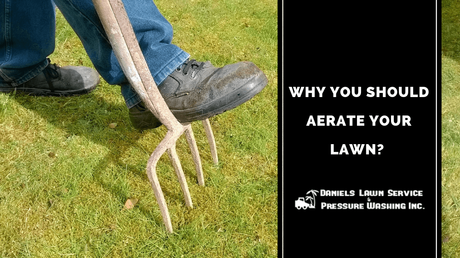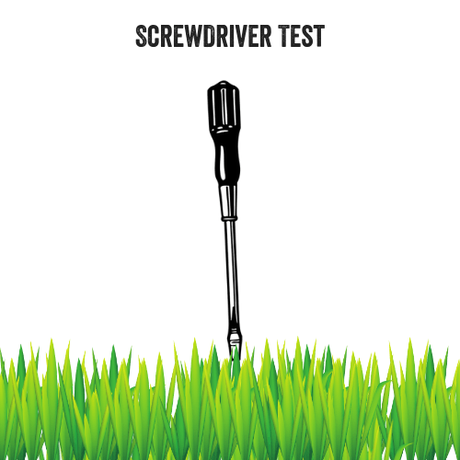
As you prepare your lawn for the fall , and all of the fun activities that will take place on it, you may decide it is in need of a spruce-up. Following the summer heat and months of irrigation, there are likely some dry or brown patches of grass due to gradual compaction. No one can enjoy a cool, fall night in Florida on a crunchy lawn! Learn why aeration is vital for repairing,and maintaining, a lush and healthy yard throughout the year.
What is aeration?
As with any plant, grass needs air, water and nutrients to properly grow. The process of aeration relieves soil compaction to enhance growth by allowing these essentials to better reach the grass roots. Without them, grass is even more susceptible to extreme weather, and will eventually wither and die.
Compaction can occur naturally in areas with heavy clay soil, but is often due to regular use, such as heavy vehicles or entertaining. This is alleviated by penetrating the soil in regular intervals as to form a direct route for nutrients to travel. To help achieve this, there are a several different styles of aeration equipment.
- Spike aerators - A spike aerator is exactly what is sounds like; poking a spike into the ground. Whereas some equipment displaces soil, spikes push the soil down to create a hole. Be careful to avoid spike aeration equipment that compacts more soil in the process - such as machines that require excessive force to insert the spikes.
- Slicing aerators - Similar to a spike aerator, slicing aerators leave the soil in the ground, while creating slicing pathways for essential nutrients. This equipment usually consists of rotating blades capable of cutting past thick grass and thatch, and down into the soil.
- Core aerators - A core aerator is very similar in appearance to an apple core, and can vary in size depending on the equipment. This style of aeration displaces the soil, known as a plug, and deposits it on top of the grass for the natural elements to break it down.
When should you aerate your lawn?
Aerating your lawn is an annual task that varies depending on the season and the type of grass you are working with. The perfect time of year is when grass is undergoing the least stress, and will soon enter a period of high growth. If you have a cool-season grass, such as bluegrass, fescue or ryegrass, fall or spring is better. Turf grasses such as Bermuda, Zoysia and St. Augustine should be aerated mid-spring to summer. To make it easier on yourself, plan to aerate a day after irrigation or rainfall. This will make the soil softer and easier to penetrate. With these new channels, it is also the perfect time to follow up with seeds and fertilizer. Timed correctly, and you can expect to see grass filling in rather quickly!

that your grass could benefit from aeration is a stressed appearance, hard-to-the-touch soil, and pooling water. If you are unsure, the " Noticeable signs screwdriver test" can help confirm your suspicion. Push the screwdriver straight down into the grass. If it slides straight in easily, aeration may not be necessary. However, if there is resistance, the lawn is likely compacted and you should purse aeration - whether by a professional lawn care service or yourself.
Why aerate your lawn?
Aeration, just like regular mowing, fertilizing and watering, is a crucial step in maintaining a healthy lawn . Maintaining a thicker lawn will prevent weeds from being able to meet and root in the soil beneath, keeping up a vibrant and uniform appearance. A few reasons to consider aerating your lawn include the following:

- Your home was recently built, which means the lawn was likely stripped. As with most construction, this also means the soil could be heavily compacted from large machinery.
- Heavy use from pets, children or entertaining, resulting in frequent compaction.
- Thatch buildup has resulted in a dry, spongy lawn. Thatch, located at the base of grass and consisting of living and dead plant matter, can accumulate and contribute to the suffocation of your lawn.
- Inconsistent soil layers. Finer texture soil, such as that which comes with sod, is often layered over coarser existing soil. When this happens, water may penetrate the finer soil, but never go any further. This can not only increase compaction but due to improper drainage, cause poor root conditions.
If you are looking to freshen up your lawn for the fall, look no further than Daniel's Lawn Service & Pressure Washing . We offer a variety of landscaping maintenance and design services , and much more. With no effort on your part, we can get your lawn looking lively just in time to host for the holidays or to improve your curb appeal. today, or call to request an estimate at 321-282-9731.

